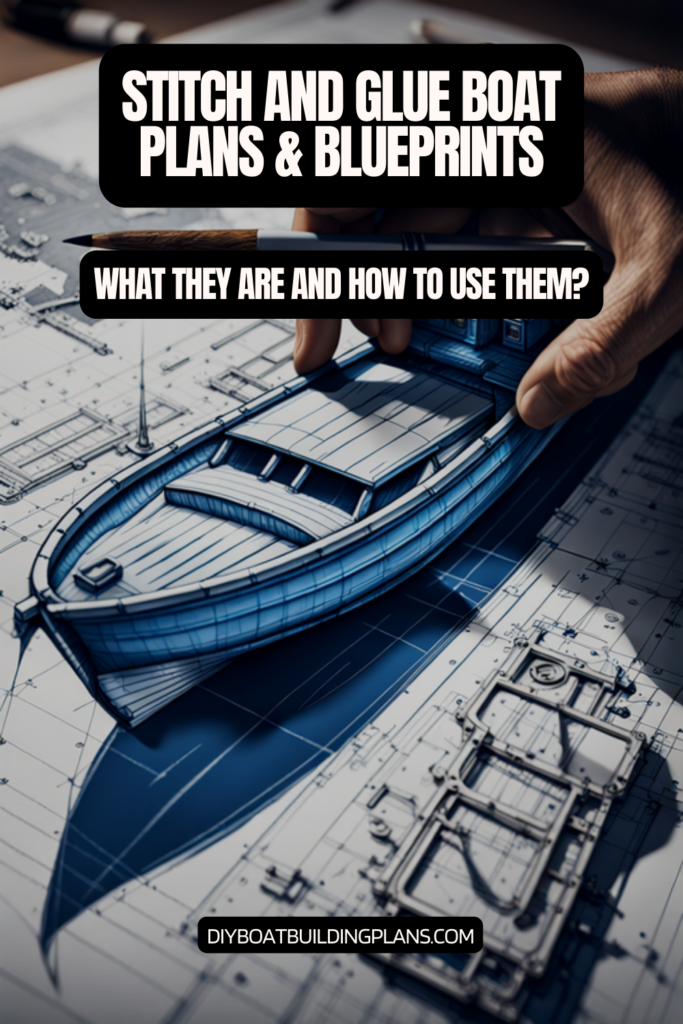
Building Your Dream Stitch & Glue Boat: A Custom Approach
So, you're dreaming of building your own boat? That's awesome! Stitch and glue boatbuilding is a fantastic way to get started, offering a blend of accessibility and customization. This guide will walk you through the process, from designing your perfect vessel to the final sanding. Let's get started!
Designing Your Custom Boat
Before you even think about buying wood, you need a plan. This doesn't mean you need to be a naval architect; plenty of resources exist for readily adaptable designs, or you can modify existing plans to suit your needs and skills.
Finding or Creating Your Plans
You have several options:
- Purchase pre-made plans: Many online retailers and boatbuilding supply shops sell detailed plans for stitch-and-glue boats of various sizes and styles. These often include material lists and construction instructions.
- Adapt existing plans: Find a design you like and modify it! Maybe you want a slightly longer hull, a different cockpit layout, or extra storage. Just be mindful of the structural implications of your changes.
- Design your own (advanced): This requires a good understanding of boat design principles and software like CAD. It’s a challenging but rewarding path for experienced builders.
Remember to consider factors like:
- Boat length and beam: Bigger isn't always better, especially for beginners. Start with a manageable size.
- Hull type: Different hull shapes provide different performance characteristics (speed, stability, etc.).
- Desired features: Think about things like seating, storage, a rudder, and a motor mount if you plan to use one.
Gathering Your Materials and Tools
Once you have your plans, it's time to gather your supplies. This is where a detailed materials list from your plans (or carefully created by yourself) becomes invaluable.
Essential Materials
You'll typically need:
- Marine-grade plywood: Choose a thickness appropriate for your design.
- Epoxy resin and hardener: This is the glue that holds your boat together. Make sure to get the right ratio.
- Stitch-and-glue wire (or staples): This temporarily holds the plywood sheets together before the epoxy cures.
- Fiberglass cloth or tape (optional): For added strength and water resistance.
- Wood filler and paint/varnish:
Essential Tools
You'll also need a range of tools, including:
- Jigsaw or circular saw: For cutting the plywood.
- Clamps: Many, many clamps!
- Measuring tapes and squares: Accuracy is key.
- Safety glasses and gloves: Always prioritize safety.
- Mixing cups and sticks: For the epoxy.
The Stitch & Glue Process: Step-by-Step
This is where the fun (and hard work) begins!
Cutting and Stitching
Carefully cut your plywood pieces according to your plans. Then, stitch or staple the pieces together temporarily, following the sequence outlined in your instructions.
Gluing and Fiberglassing (if applicable)
Apply epoxy resin to the seams, ensuring complete coverage. Remove stitching once the epoxy has cured. If using fiberglass, apply it over the seams for extra reinforcement.
Finishing Touches
Once the epoxy has fully cured and the boat is structurally sound, you can add your finishing touches: sanding, filling any gaps, painting, and adding any interior or exterior features.
Launching and Enjoying Your Creation!
After all the hard work, the best part is finally launching your boat. Take your time and remember to always prioritize safety on the water. Congratulations on your achievement!
Frequently Asked Questions
Q: How long does it take to build a stitch and glue boat?
A: It depends on the size and complexity of the boat, as well as your experience level. Simple designs can be completed in a few weeks, while more complex projects can take months.
Q: What type of epoxy should I use?
A: Choose a high-quality marine-grade epoxy designed for boatbuilding. Follow the manufacturer's instructions carefully regarding mixing ratios and curing times.
Q: Can I motorize my stitch and glue boat?
A: Yes, many stitch and glue designs can accommodate outboard motors. Just make sure your plans account for the added weight and stress on the hull.
Q: What if I make a mistake?
A: Don't worry! Mistakes happen. With careful planning and attention to detail, most minor errors can be easily corrected. For major issues, consult your plans or seek advice from experienced boatbuilders.
0 comments:
Post a Comment
Note: Only a member of this blog may post a comment.